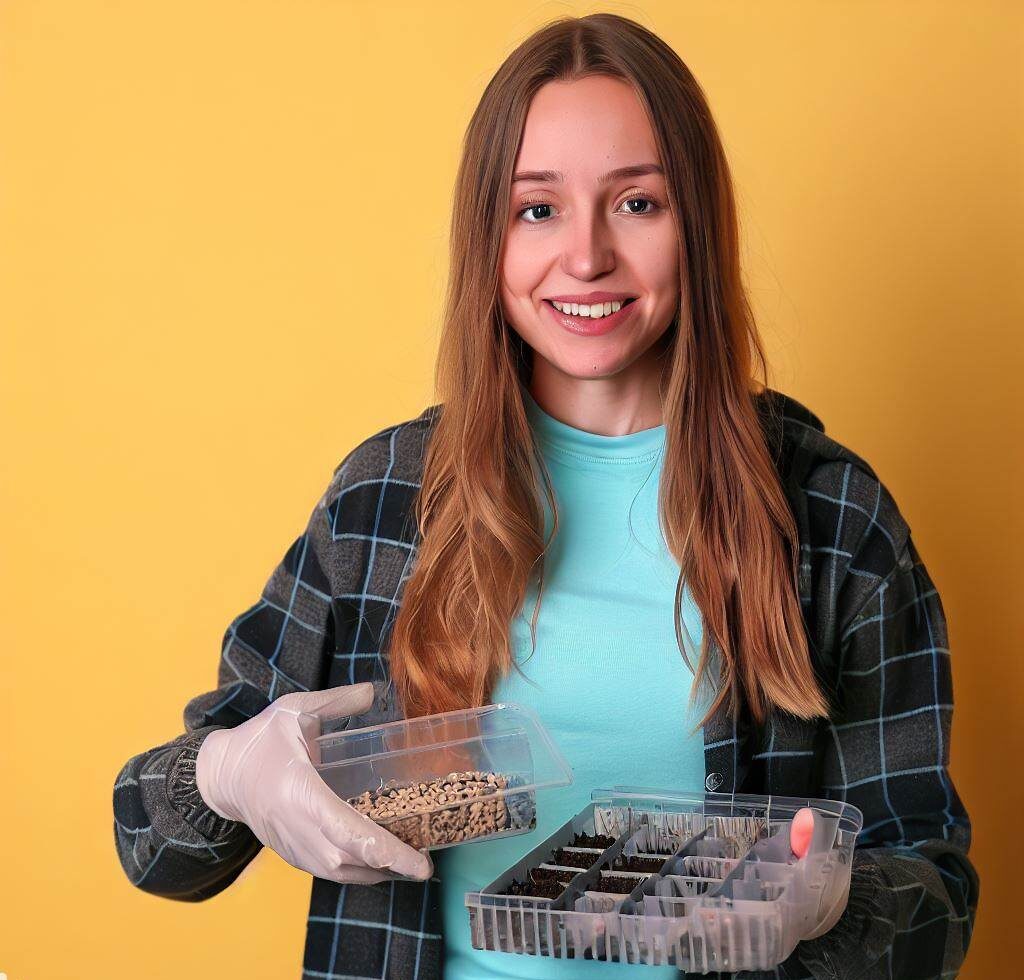
Germinating cannabis seeds using the cold stratification method is a time-tested and reliable technique that mimics the natural conditions required for successful seedling growth. Unlike the popular paper towel method, which is primarily used to test germination rates and may introduce human errors, cold stratification offers a more organic and foolproof approach to encouraging seed dormancy to break. In this article, we will explore the benefits and steps involved in cold stratification for cannabis seeds, emphasizing the use of a sterile medium for optimal results.
Understanding Seed Dormancy
Seed dormancy is a natural mechanism that helps protect seeds from germinating prematurely and ensures their survival under unfavorable conditions. During seed development, certain factors like environmental cues, genetic traits, and hormonal balances contribute to the induction of dormancy. This dormancy is essential in nature, allowing seeds to endure extreme temperatures, droughts, and other stressors until the right conditions for germination are present.
Several reasons can lead to seed dormancy, hindering germination when using simple germination methods like the paper towel technique:
1. Genetic Programming: Seeds of many plant species, including cannabis, are genetically programmed to remain dormant until they experience specific environmental cues. These cues might include temperature fluctuations, moisture levels, or even exposure to light cycles.
2. Seed Coat Hardness: Some seeds have a tough and impermeable outer layer known as the seed coat. This hard coating acts as a barrier, preventing water and oxygen from penetrating the seed and inhibiting germination until external factors, like abrasion or microbial action, weaken the seed coat.
3. Chemical Inhibitors: Within the seed, there may be chemical inhibitors that actively prevent germination. These inhibitors can be broken down or washed away over time when subjected to the right conditions.
4. Immature Embryo: In certain cases, the embryo inside the seed might not be fully developed at the time of seed dispersal. The embryo needs additional time to mature and become capable of germination.
The Benefits of Cold Stratification
1. Increased Germination Rates: Cold stratification encourages a higher percentage of seeds to germinate compared to other methods. This is because the process directly targets and stimulates the seeds’ natural mechanisms for breaking dormancy, resulting in more viable seedlings.
2. Healthier Seedlings: The slow and gradual nature of cold stratification helps ensure that seedlings emerge at the optimal time when environmental conditions are most favorable for their growth. As a result, seedlings are stronger, more resilient, and better equipped to withstand various stressors.
3. Reduced Human Error: Unlike the paper towel method, which involves constant monitoring and risk of mishandling delicate seeds, cold stratification with a sterile medium is relatively hands-off. Once the seeds are set up in their stratification environment, minimal intervention is required until they are ready to be transplanted.
Cold Stratification Process for Cannabis Seeds
1. Seed Selection: Start by choosing high-quality cannabis seeds from a reputable supplier or from your own healthy plants. The success of cold stratification heavily relies on the quality and viability of the seeds.
2. Preparing the Seeds: Prior to cold stratification, soak the cannabis seeds in water for 12-24 hours to ensure they are adequately hydrated. This step is vital as it jumpstarts the germination process.
3. Sterile Medium Setup: Use a sterile medium such as peat moss, vermiculite, or coconut coir to create a suitable environment for cold stratification. Dampen the medium with distilled water until it is moist but not saturated.
4. Placing the Seeds: Spread the hydrated cannabis seeds evenly over the surface of the sterile medium, ensuring they are not touching each other.
5. Container Selection: Place the medium with the seeds in a sealable plastic bag or a covered container. This will maintain a stable and humid environment during the stratification period.
6. Optimal Duration: The duration of cold stratification can vary depending on the cannabis strain. However, a general guideline is to keep the seeds in the cold environment for approximately 1 to 4 weeks. Some strains might benefit from longer stratification periods.
7. Cold Storage: Store the container with the seeds in a refrigerator’s crisper drawer or another consistently cold (but not freezing) location.
8. Monitor Moisture Levels: Periodically check the medium to ensure it remains moist throughout the stratification process. Add a few drops of water if needed to maintain the desired humidity.
9. Transplanting: Once the cold stratification period is complete, carefully remove the germinated seeds from the sterile medium and transplant them into their growing medium or preferred germination container.
In conclusion, Cold stratification is a natural and reliable method for germinating cannabis seeds that offers numerous advantages over the traditional paper towel method. By using a sterile medium and replicating the seeds’ natural conditions, cannabis enthusiasts can achieve higher germination rates and healthier seedlings. Embracing this technique not only reduces human error but also encourages a more sustainable and successful approach to cannabis cultivation. So, if you’re eager to unlock the full potential of your cannabis seeds, consider giving cold stratification with a sterile medium a try, and witness the wonders of nature’s wisdom unfold in your garden.
Happy growing!


